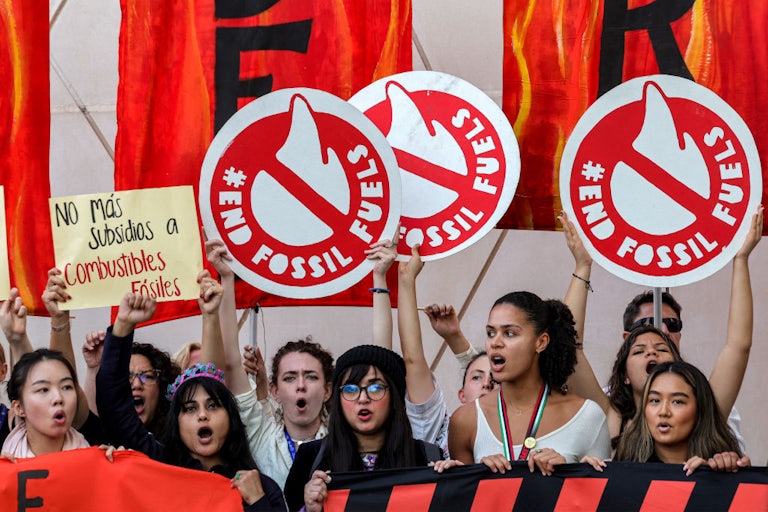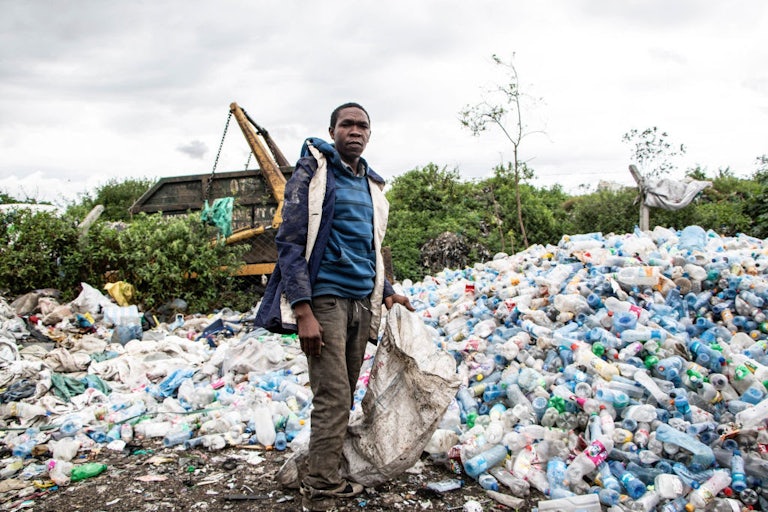How to Be Hopeful Going Into 2024
Optimism seems to be a theme in climate coverage. But what does productive optimism look like?

Twenty-one species were finally, after much deliberation, declared extinct in the United States last year. Only 11 other species had been declared extinct in the prior half-century. 2023 was the warmest year ever recorded for Earth’s average temperature. Some researchers think 2024 could be worse. The Biden administration made $382 million auctioning off oil-drilling leases on December 20—part of record oil production on Democrats’ watch. By the end of 2024, the country could be preparing for another Trump presidency—likely gutting environmental protections and re-withdrawing the U.S. from the Paris Agreement.
Yet perhaps counterintuitively, an emerging theme as 2023 closed out and made way for 2024 was that of hope. “Here’s How Bad Climate Change Will Get in the U.S.—and Why There’s Still Hope,” was how Wired announced the results of the Fifth National Climate Assessment in November. “Hope is a discipline,” declared one Guardian headline published New Year’s Eve atop an interview with Nathan Baring, one of the young plaintiffs suing the U.S. government for having “willfully ignored” warnings about fossil fuels. (The case was filed in 2015 and still hasn’t gone to trial.) And then there’s Hannah Ritchie’s book Not the End of the World, being released next week to notable press interest. Ritchie argues in interviews in The New York Times and The Guardian this week that, while “it has been an incredibly bad year,” we’ve made more progress than we sometimes acknowledge on climate change, and reframing existential dread as “How can I try to contribute to accelerating the good outpacing the bad?” may be more productive.
Hope is a good thing. Climate “doomerism,” numerous writers have pointed out, is destructive—giving people the false sense that there’s nothing left to fight for, when in reality “every fraction of a degree” matters for communities, species, food systems, and livelihoods. To put it another way: As a practical matter it’s hard for humans to mobilize at either an individual or a collective level when they feel hopeless, and as a scientific matter, portraying the future as a dead-end done deal isn’t accurate.
Hope is searingly politically relevant, and also complicated: The politics of hope run directly counter to the politics of fear, which have a track record of empowering regressive nationalist and racist movements. But hope can also be abused. There is a rich history among rich nations of pushing fossil fuel phaseout ever further into the future, hoping that unproven or unscalable technological solutions will suck carbon out of the air and take care of the problem for us.
Nor can hope alone, as TNR’s Kate Aronoff argued in a vital piece last spring, be expected to fix our dysfunctional climate politics:
On one hand, it’s understandable that climate advocates would think about the best way to communicate about climate change. On the other, fixating on finding the perfect tone for climate communication mistakes messaging and mindset for a theory of change. Getting off fossil fuels requires replacing the lifeblood of capitalism on a stunningly quick timeline, and replacing it with alternatives just now coming into their own. Doing that isn’t so much an issue of pessimism or optimism but of political economy…. The reason there is now a “rapidly closing window of opportunity to secure a liveable and sustainable future for all,” per the latest IPCC report, isn’t because some ill-defined mass of climate-concerned people has been insufficiently hopeful in public. It’s because the people who want to pass adequate climate policies have significantly less power and money than the people who want to obstruct such policies.
This last sentence points to another thing worth remembering: Hope probably shouldn’t be used as a substitute for accountability. A lot of companies have made a lot of money cooking the planet. They knew they were doing it, and they funded misinformation campaigns to keep citizens and their governments from intervening to stop them. And while one could argue that fixating on blame can be counterproductive, naming and blaming could be very helpful if it means people stop wanting to be associated with or do the lobbying and marketing for the entities that got us here. Cultural shifts are important for political change. Then, too, the money needed to save the world has to come from somewhere: Making major polluters pay to clean up the mess is a good start.
As we begin the new year, I like reading these hopeful pieces. I also wonder how they will age: whether editors like me will be greenlighting hopeful pieces a year from now or whether the prospect of a second Trump administration will blitz all this climate discourse into oblivion. Hope doesn’t mean a lot without action, and the precise causal relationship between the two can be tricky to unpack (as a multitude of widely circulated aphorisms attest). Let’s hope 2024 goes well. Let’s not count on it.
Good News/Bad News
![]()
Electric vehicles just got more affordable: You can now get instant rebates on electric vehicles rather than waiting until tax-filing time, thanks to a change in federal incentives that took effect this week.
![]()
The Great Lakes came into 2024 with the least amount of ice they’ve had in 50 years.
Stat of the Week
305 days
… until Election Day 2024, the outcome of which could have a gargantuan
effect on U.S. climate policy, emissions, and climate change around the world.
What I’m Reading
Strawberry Case Study: What If Farmers Had to Pay for Water?
The fees levied on irrigation in California’s bountiful Pajaro Valley are working, offering hope that similar systems could help address the West’s water crisis, as well as water crises across the U.S. and in fact all over the globe.
Experts from as far away as China and Egypt are traveling to the valley to study the system. But replicating it elsewhere could face major challenges. For one thing, “People don’t like taxes,” said Nicholas Brozovic, an agricultural economist at the University of Nebraska. “There’s nothing mysterious about that.”
New research on the program revealed a direct connection between paying for the groundwater and conserving it: A 20 percent increase in the price of groundwater has resulted in a 20 percent decrease in the extraction of groundwater.
One reason experts see Pajaro as a model: Despite the high price of water, agriculture in the region is thriving.
Read Coral Davenport’s report at The New York Times.
This article first appeared in Life in a Warming World, a weekly TNR newsletter authored by deputy editor Heather Souvaine Horn. Sign up here.






.png)


